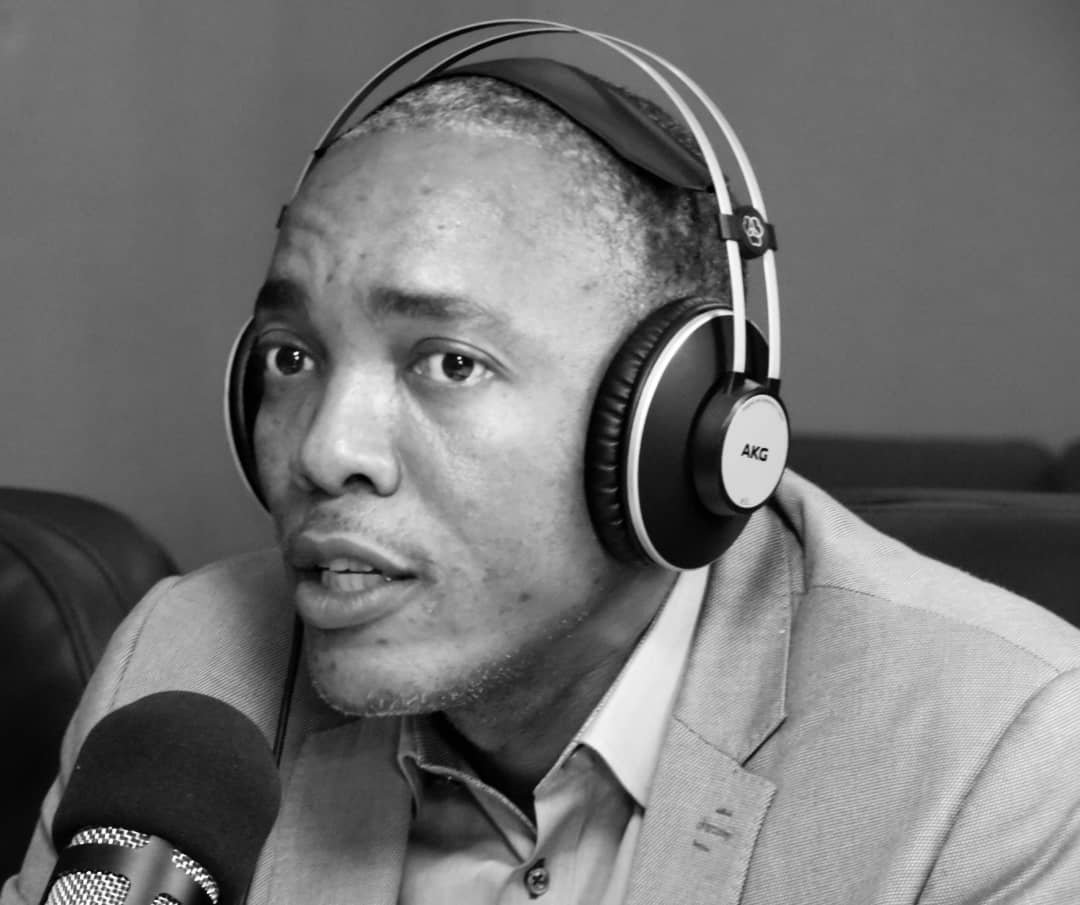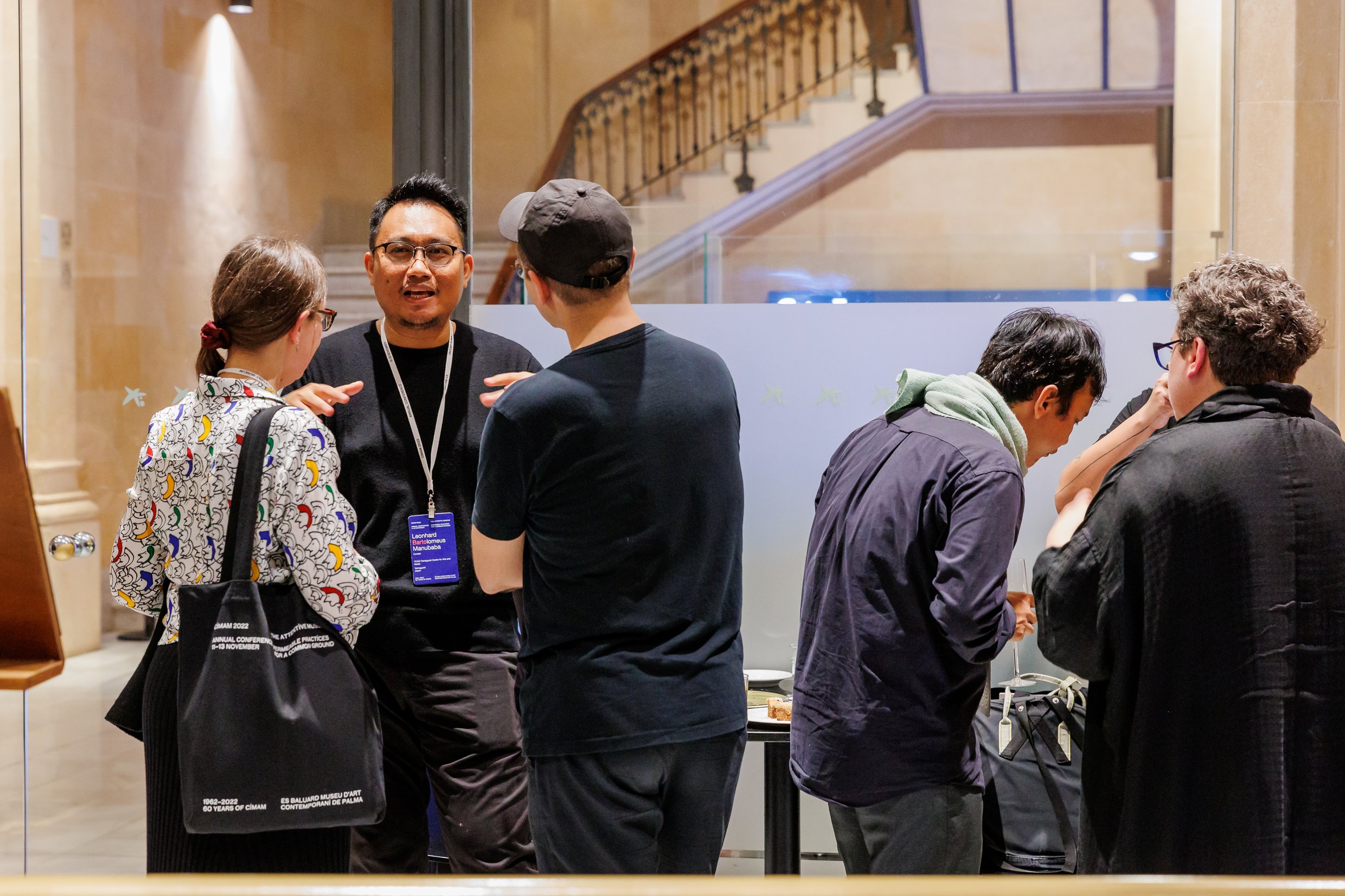Who’s Who at CIMAM: Christian Nana

"If you want to engage with your local community, you must develop curated exhibitions that consider their feelings"
Interview with Christian Nana Tchuisseu, Director and Curator of Blackitude Museum and Art of God Gallery, Yaoundé, Cameroon,
We are grateful to CIMAM for allowing us to share our experiences as curators of modern and contemporary art, specifically in Africa and, more particularly, in Cameroon. Understanding the current state of artistic movements in this region is of utmost importance, as is illuminating our work as curators.
1 How did you get started in the world of art curating, and what led you to dedicate your professional career to it?
I began my career as a journalist in Cameroon, where I discovered a general lack of understanding of cultural activities and artists' work. This discovery compelled me to promote various artistic branches in Cameroon. While visiting museums, I recognized a marked need for more communication and visibility with the outside world. I felt a personal commitment to promoting this cultural heritage, which led me to train internationally with ICOM and the Goethe Institute to develop good museum programs and activities.
I later became the Artistic Director at the Cultural Center of Yaoundé, where I curated exhibitions and activities that allowed me to explore contemporary artistic creation and the different approaches to curating it. For over a decade, I have been a museum director and curator of modern and contemporary art activities in Cameroon, where I work to integrate contemporary art into temporary exhibitions and dedicated galleries.
How would you define yourself as a curator concerning research, the relationship with artists, and institutions?
For me, being a curator is a kind of “call of fate”, because, despite training and diplomas, a good curator must have something, a feeling that is his/her personal touch, his brand.
In my daily work, I explore innovative forms, artistic creation, and development around this. That will make my trademark in this very complex, competitive, and dynamic environment, especially in Africa
In 2013 I started, with friends and people who love contemporary arts here, to introduce the notion of contemporary action and exhibition. We have renowned contemporary artists from Cameroon who spread good actions and activities on contemporary art.
We want to follow the work of young artists and continue what the older ones are doing now in the international areas. We are so committed as curators because we want people to see the new field of contemporary art in Cameroon.
Curators need to connect people with contemporary art because, most of the time, people don't understand the message that artists want to convey with their creations because of their abstraction and because they are not common in our African culture, so curators need to integrate this dimension in their works.
If you want to engage with your local community, you must develop curated exhibitions that consider their feelings because we don't do exhibitions for people from abroad but for the local communities.
The contemporary art sector is evolving by creating new narratives that challenge traditional art forms and respond to current social and cultural issues. What do you think about this trend?
I agree. The sector is in constant dynamism worldwide, but in Africa, we professionals and curators are not following this dynamism. Why? There is a new narrative, artistic approach, and vision. What is our proposal?
We should imperatively change our mindset on these issues and have a new narrative and storytelling of our contemporary and modern art projects and exhibitions.
That is what I propose through this new and important concept I built and designed called "CRYPTO MASK," an international multimedia art exhibition around the African mask, its society and function, the contemporary discourse we have today around this mask, its digitalization and the associated technology for this conceptual artwork. Narrative and storytelling combine to connect people and visitors with this exhibition, and the message we want to spread is the most crucial element for the curator, allowing him or her to develop his work and build a reputation.
As African curators, our challenge is to create a cohesive narrative that links traditional, modern, and contemporary art, showcasing the rich diversity of our continent. We must explore it.
What kind of narratives are you currently working with, or are you most interested in?
I am currently curating this international exhibition project called "Crypto Mask," which revolves around the masks we use in museums and local communities. I want people to know the new discourse around this premium mask we use for different ceremonies and rituals. I pose a contemporary discourse around this mask using the root "crypto", which describes a digital route, and how we integrate digitization into this contemporary exhibition concept.
As a curator, I want to explore, and make known, the new discourse about the African mask and the mask in general, among local communities and young people afraid of these masks in ritual contexts, through the tool of our time, which is digitization.
We can integrate this element of creation and add it to young people's smartphones to connect them to this heritage through different digital files that we can let them see. So it's about integrating the digital to give a new approach to contemporary artworks and interest young people to connect with our heritage through this kind of installation.
What are your most common working practices and research sources?
The curator's job is to introduce people to a topic or theme and let them continue to reflect on it by presenting artistic works. As a curator, when I start developing ideas, I want the real information about the subject, which always represents much information. Taking the example of the exhibition I am curating on crypto masks, my first approach was to find out where these masks come from and find the people who could share information about them, so my first source of information was the oral resource of folk wisdom. From there, I immersed myself in the existing bibliography on this topic. That's when you can summarize everything you've studied and bring your own point of view to the table. And this is the innovation: to integrate your own point of view, to make a small transformation to create a narrative with the curatorial approach. So the first thing to think about is how you want to develop a theme and where you want to direct people with the curatorial practice. What is your point of view and what do you want to contribute with this curatorial work?
We, as curators, should not influence the artistic work or creation, but we can build an exhibition concept and an innovative artistic approach that integrates research through the artistic work.
What book have you recently read that has inspired you in the development of your professional activity?
I read the book by Al Weiwei, an artist, curator, sculptor, photographer, and Chinese activist on the human right who inspired me a lot through this book titled in French “ 1000 ans de joies et peines”. This allowed me to understand his character and philosophy. Very moving and inspiring book.
What was the last exhibition you attended, and how did it impact you?
I would like to recommend the exhibition "Pansement" by Alouim Moussa, a Cameroonian contemporary art artist.
Can you share a song to include in CIMAM's Spotify playlist?
I share a song by Wes Madiko, with title Awa Awa, a very deep and inspiring song to include in CIMAM's Sportily playlist.
Christian Nana Tchuisseu is a specialist in Information and Communication Sciences. It invests journalistic and media practices with a sustained option for the Production of cultural and creative content. A sum of experiences garnered during his professional career in the audiovisual media which opened his mind to the setting up of communication companies, digital platforms and TV, field of Arts and Culturee genrally , visual Art, Heritage and Museum Particurlarly.
He s also Cultural Institution administrator, Curator and Director of the Blackitude Museum . He s Artist also.
Christian Nana is the Chairperson of ICOM Cameroon and former International Vice-chairperson of the ICOM Advisory Council "International Council of Museums".
Who's Who in CIMAM: Get to know our members and find new ways of collaboration
A new project intended to activate CIMAM's extraordinary and unique international network of Directors and Curators of Museums and Collections of Modern and Contemporary Art.
We want our members to harness the contacts they have been generating for the last 60 years to make themselves known and find opportunities for collaboration anywhere in the world.
"Who's Who at CIMAM", are a series of rapid, practical, and dynamic written interview aiming to provide relevant information about the projects in which members are involved, sources of information and inspiration, working methodologies, and recommendations on readings and exhibitions.

Want to participate?
Send us a request to info@cimam.org and we will interview you, and you will be featured in CIMAM's social networks and newsletter.